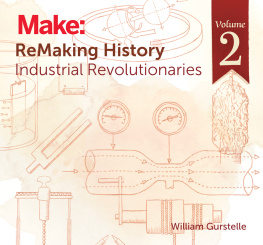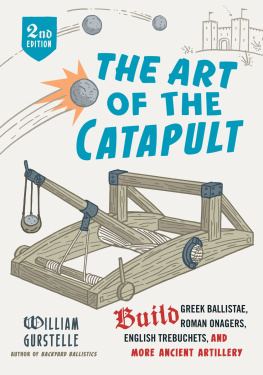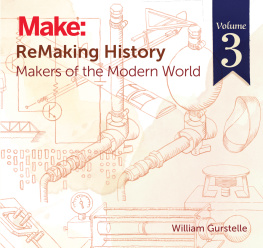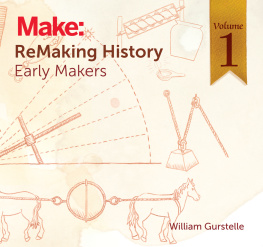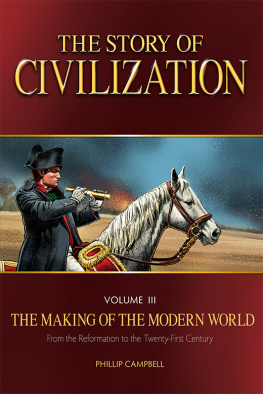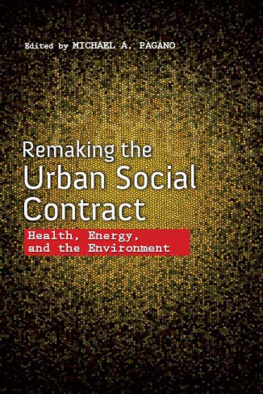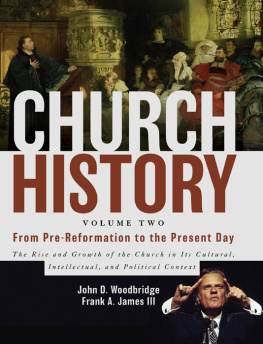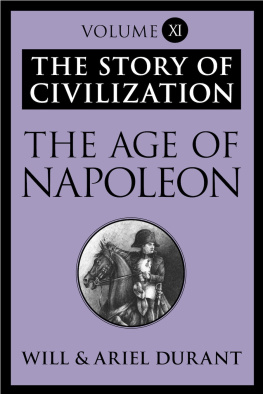
Part I
Makers in Metal

O n a clear, cold New England night in late 1807, those Yankees who were looking skyward observed a display of meteors unlike any they had ever seen. Not only were the heavenly streaks exceptionally bright, but they were noisy as well. Witnesses said they crossed the sky making a sound like cannonballs being rolled on a wooden floor.
These were big meteors in fact, some of them were large enough to enter the atmosphere and land without burning up. Meteorites fell upon large areas of Connecticut, Massachusetts, and Vermont. This was world-changing stuff, because prior to this, no one had ever considered that some of the rocks around us could have extraterrestrial origins.
The news of the rocks falling from above spread quickly, and two Yale University professors dashed out from New Haven to check things out. They spent days tracking down the landing spots and talking to locals. Several meteorites were brought to them for examination. After a great deal of careful inspection, they were ready to make a startling statement. These rocks, they declared, were not of this planet. They were, in fact, stones from the sky.
At the time, this statement was so startling that almost no one believed them. Thomas Jefferson certainly didnt. It was easier to believe that Yankee Professors would lie, he said, than that stones would fall from heaven.
Nonetheless, these were indeed rocks from the sky, and given that such a large number of them were available for study, the scientists of the day had clear and unambiguous evidence that meteorites did exist. They were also able to draw conclusions about the composition of the fallen stars. Some of them, they found, were made of iron.
Now, this otherworldly iron was unlike anything seen on Earth. It was not simply a high-content ore, but rather, it was purified stuffit was nearly 100-percent iron with a distinct crystalline structure.
Upon reading about this in scientific journals, archaeologists around the world sat bolt upright, for this finding could explain something that had been puzzling them for years.
For a very long time, scholars had been unable to explain the fact that evidence at archaeological sites had unequivocally showed the existence of very ancient, high-quality, iron tools. Up to now, this was a baffling find. At the time these tools were made and used, smelting or purifying iron was still an unknown skill. And on Earth, iron simply does not exist in a pure, unoxidized, metallic state.
These discoveries, found in several places on the planet, dated back as far as 4000 BC, which was thousands of years before the metal-refining breakthroughs of the Iron Age that began around 1300 BC. So how could such ancient people have tools made of pure iron?
But now that these meteors had been discovered, scientists had an answer. Could it be that those early iron artifacts were actually fabricated from extraterrestrial ironmeteoritic iron that quite literally fell from the sky? This theory now seemed quite logical, and years later anthropologists would find that ancient peoples had long used extraterrestrial iron blades on their bone tools and spears. In fact, an Inuit tribe in Greenland had chipped their iron for spear tips for generations, all from a closely spaced splash field of a huge meteorite now referred to as the Cape York meteorite (as shown below).
Like the tools of these indigenous peoples, the projects in this section utilize iron (as well as aluminum), although well procure our raw materials from less exotic sources than outer space. Metalworking is one of the foundations of the modern age, and the three projects that follow are both fun to make and fun to use they include a rubber band gun, a tuning fork, and a campaign torch.

Part II
Physics and Chemistry Revolutionaries

T he Greek philosophers of the Classical era, led by Empedocles, who was followed by Aristotle, believed that everything in the universe was made up of four elements: earth, air, water, and fire.
Everything in the world, from corn to cotton to clouds,was composed of these four elements the differences between all the things we see or touch was only the relative abundance and mixing manner of the four constituent components. For instance, clouds, according to Aristotle, were a light composition of air and water. Cotton, on the other hand, was a mixture of rock, air, and water, and differed from corn only by the difference in proportion of each element. This thought pattern was known as the Four Element hypothesis, and it was accepted with only minor modifications as the cosmological basis for the entire universe for more than a thousand years.
But, starting in the late Middle Ages, this explanation no longer fit the results of many experiments. Although true scientists, as we know them now, did not exist, there were alchemists aplenty, and many of these experimenters actually had excellent analytical technique. In their quest to find a way to turn common metals into gold, the alchemists analyzed a number of chemical processes these experiments produced results that didnt jibe with the classical Four Element worldview. At this point, the classical Greek pillars of cosmological doctrine began to crumble. The alchemists were on to something, and they were beginning to suspect that the world was much, much more complex than they had been led to believe.
By the 1700s, new ways of thinkingscientific instead of alchemicaltook hold. Real science came into existence, starting with physics, followed by chemistry. The great early thinkersIsaac Newton, Robert Boyle, John Dalton, and Antoine Lavoisier among themwere able to piece together the fundamental truths of the way the world really worked.
Part III
Electricity for the Future

I n the final three projects, well make and use humankinds most industrious servant, electricity. Electricity is a bit hard to understand because you cant see it or hold it in your hand. But, in order to really learn about electricity, we need to figure out how to get our arms around it, at least figuratively. As you already are aware, you cant really do that with household currenttheres far too much energy in there to play safely. Consequently, the amount of electricity well use in our projects will stay very small but well still have enough to work with to do some very useful and interesting things.
Electricity was known to the early Greeks indeed, the word electricity derives its name from the ancient Greek word for amber which was electron. For generations, Greek philosophers credited amber with nearly magical powers.
When the Greeks rubbed amber with a cotton cloth, they said that the spirit hidden inside came out. The spirit could grab and hold on to small detached objects, such as bits of parchment, thread, or cloth. The ancients were at a loss to explain this. Perhaps the gods up on Olympus were behind it. In any event, the phenomenon was looked upon with superstitious awe and the amber itself was regarded as having magical attributes.
Next page
